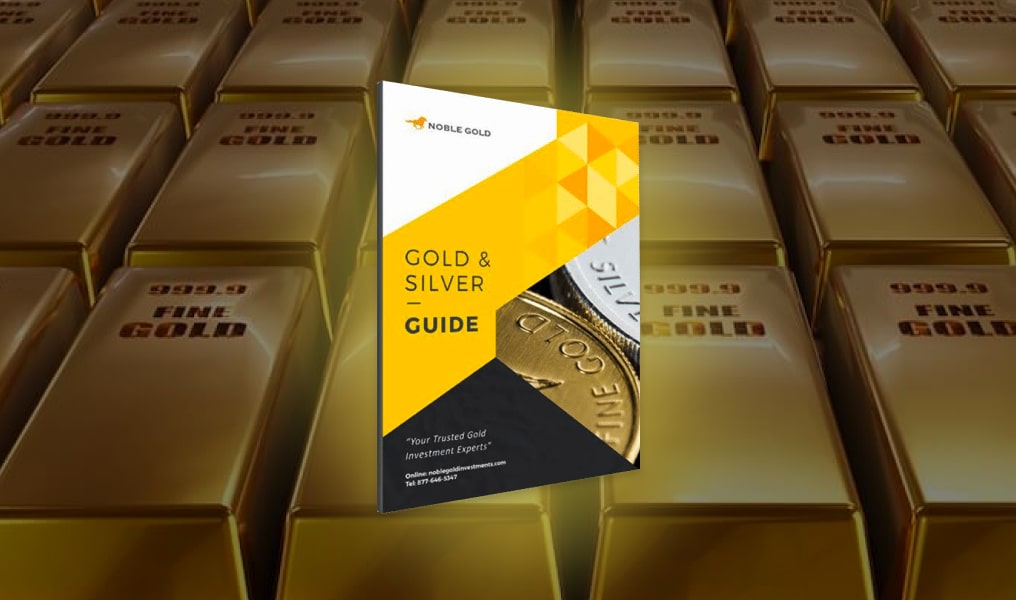Navigating the world of high- and low-risk investing can be challenging, particularly for beginners.
From 401(k)s to IRAs to precious metals, the retirement investing options never seem to end. Older generations have barked about the importance of saving for the future and opening a retirement account. With the current state of the economy, there’s no time like the present to start.
Fortunately, the experts here at SpaceXgold are here to help walk you through a few safe investment options for your retirement portfolio.
The Importance of Investing
Not only will your future self thank you for investing for the future, but there are plenty of advantages that could benefit you now. Some of the benefits of investing include:
- Growing Your Finances: The most obvious reason for investing is to increase your money and create more wealth over time. Whether you choose stocks, certificates of deposit, bonds, precious metals, or another investment vehicle, there are plenty of options to best suit your needs.
- Reducing Taxable Income: Certain types of investments allow you to reduce your amount of taxable income. For example, you could contribute pre-tax dollars into a retirement fund, like a 401(K) or traditional IRA. Even if your investments generate a loss, you may still be able to apply that loss against gains from your other assets, ultimately lowering your taxable income.
- Earning High Returns: Many investments offer much higher rates of return than a traditional savings account. The higher the rate of return on the investment, the higher the potential to make more money.
- Achieving Financial Goals: By earning a higher rate of return and growing your money, your financial goals can be reached quickly. Of course, this is also a bonus for people saving for retirement, a popular reason for investing.
What Is “Risk” When It Comes To Investing?
In investing, there’s no precise or “one-size-fits-all” risk definition. However, the consensus is that risk is the probability of an asset performing below expectations or experiencing a permanent loss of value. For example, if you buy an asset and expect it to produce a 10% return, the chance of your recovery being below 10% is the “risk” of that investment.
To mitigate risks, many investors choose to build portfolios that have a low maximum potential loss and a lower probability of risk overall. However, some investors do participate in high-risk investment opportunities, understanding that a high-risk investment could yield a high reward. But what are the differences between low- and high-risk investment opportunities?
Low-risk investing
As the name suggests, low-risk investments don’t carry too much risk to the investor. Low risks are seen as safe-bet opportunities and offer the relief that your investment is less likely to be lost. They are a great addition to portfolios as they can act as a buffer to balance more volatile market investments.
With low-risk investments, you usually end up with less to earn or gain, both in the short- and long-term. So while low-risk investing is an excellent way to protect against the chance of loss, it also helps ensure that if you experience a loss, it won’t devastate your entire portfolio.
High-risk investing
High-risk investments usually have either a chance of underperforming, a high probability of a devastating loss, or a significant chance that you’ll lose capital. However, high-risk investments usually have more substantial returns.
It’s the investor’s decision to carefully weigh the chance of loss against the possibility of gaining a return or benefit.
Safe Investing
Safe investing is a way for people to have a secure place to grow their wealth. Beginners will particularly enjoy the harbor that safe investing provides, especially in a volatile economic market.
In general, five types of investments are considered to be the safest investments in the world:
- Treasury securities
- Money market accounts
- Fixed annuities
- Bank savings accounts
- CDs
In addition, you might want to consider investments with insurance. These investment types virtually eliminate any risks involved.
The fundamental purpose of these investment vehicles is to protect your principal (the money you’ve invested). The next aim is to provide you with extra income through interest.
Safe investments are just that: safe. You won’t see any high rewards from these, but you won’t risk your money, either. Overall, they make an excellent foundation for any wealth portfolio.
What does it mean?
So, what does it mean to have a safe investment? A safe investment ensures that you’ll have a way to grow your wealth, even in times of economic uncertainty.
For example, if you have a robust and safe portfolio, you could venture out and put money into other, riskier investments. If those riskier ventures don’t pay off, you’ll still have your safe investments as backups.
However, it’s important to remember that your investment strategy should evolve, especially as your profile matures. Younger people tend to take more risks, whereas older people prefer to move their money into safer ventures as they near retirement age.
What Percentage Of Your Portfolio Should Be “Safe Investments?
It’s important to remember that investing your hard-earned cash means accepting the risk of losing it, no matter how small the play. Most investors don’t mind taking on that risk as long as it has a fair chance of tradeoff to grow their wealth.
So, how much should you keep in safe investments? The general rule of thumb is to keep three to six months’ worth of living expenses in safe, liquid assets.
Example: Your monthly living expenses are $3,000, including mortgage or rent, food, utilities, and other necessities. Therefore, you should have between $9,000 and $18,000 in safe, liquid accounts that are easy to access, such as money market accounts or a bank savings account.
However, when it comes to actual retirement savings, the reality is that you can never save enough. It’s nearly impossible to know exactly how much money you will need for retirement, because you don’t know how long you will live or what the cost of living will be in the future. The best bet is to save as much money as you can for retirement in safe investments like an IRA.
Low-Risk Investing Options
Many American investors choose low-risk investments as a safe way to diversify their portfolios. With such a wide range, it’s easy to begin your investing journey. Ten of the most common low-risk investments for Americans who want to grow their wealth include:
IRAs & 401Ks
One of the safest long-term investments that anyone can make is in an IRA or a 401k. There are a number of different types of IRAs and 401ks, but for the purposes of this article, we will keep things very general.
These investment vehicles are designed to help you save for retirement in two ways. First, both IRAs and 401ks provide tax advantages to the investor. For example, when you invest in an IRA, you can deduct the amount invested from your total taxable income, reducing your total tax burden.
These tax benefits also will be extended to the value of your investment account as well as the dividends you reinvest. This way, as you invest more every year, the value will continue to compound as your dividends are reinvested and your account will continue to grow untaxed.
For example, let’s say that you start investing in an IRA when you are 25 years old and you invest $5000 per year. With an expected rate of return of 7%, your account would be worth just over $1 million, despite only having contributed $200,000 to the account. Once you begin to take distributions from your account, you will then only be taxed on those distributions.
U.S. Treasury Bonds
Arguably the safest investment in the world, U.S. Treasury Bonds are the perfect way for beginner investors to gain experience. Treasury bonds take 30 years to mature and are highly liquid. You can purchase or sell U.S. Treasury Bonds through mutual funds or directly.
If bonds are kept until they mature, you’ll likely grow your wealth unless you purchase a negative-yielding bond. However, selling them before they mature increases the risk of losing money as interest rates fluctuate.
The Treasury issues bonds in $1,000 denominations, known as “par value.” Essentially, a bond is a loan from the government that will agree to pay you a fixed sum of interest until it matures.
Series I Savings Bonds
A Series I savings bond is a low-risk investment that changes with inflation. Considering the current forty-year inflation high that the U.S. is experiencing, a Series I savings bond is an excellent choice for any investor and can earn interest for 30 years.
If inflation begins to rise, the interest rate on the bond also goes up. However, it works both ways: If deflation occurs, the interest rate will go down.
Unfortunately, a limit exists on how much you can invest in Series I savings bonds: $10,000 annually per Social Security number. In addition, you must hold your bond for at least a year before you can liquidate it with the government. Three months of interest are forfeited if the bond is cashed out before five years.
Preferred Stock
Preferred stock is another low-risk investment. Buying stock refers to buying shares of equity in a company. You can buy preferred or common stock, with the former providing more benefits such as higher dividends.
How do preferred stocks work? With guaranteed dividends, you’ll have a reliable income, regardless of the stock’s actual performance. If interest rates rise or the market falls, the value of preferred stocks may fluctuate.
In addition, they have income-earning potential similar to bonds and the appreciation capacity of equity stocks.
Dividend-Paying Stock
Dividend-paying stocks are usually safer than high-growth stocks. Though they fluctuate with the market, even when it drops, they don’t fall as far. In addition, dividend-paying stocks are less risky than other types—but not without risk altogether. If the company declares a loss, it could eliminate its dividend, harming the stock price.
Covered Calls
Covered calls involve selling a call option on one of your previously-owned stocks. Then, you’re protected, or “covered,” if the stock rises and your call option expires. Also known as “going short,” this method can generate income from a stock position.
Many consider covered calls an excellent way to hedge their bets, as this strategy involves selling some of the stock’s upside for a short period to get the premium. Once the call option expires, the outcome depends on whether the stock finishes above or below the call’s strike price:
Above: The call buyer purchases the stock from you at the strike price, and the call seller maintains the premium.
Below: The call seller keeps the option premium and the stock, and the call buyer’s option expires with no value.
Annuities
A fixed annuity is one of the safest investments on the planet. The core of a fixed annuity is an insurance product: You pay the insurance company a certain premium and receive a fixed interest rate in return on the premium during the accumulation phase. The payout phase is when you’re ready to start earning income.
Then, your earnings and premium are, in essence, guaranteed income for as long as you live. As far as safe investments go, you can’t go wrong with fixed annuities.
Savings Accounts and CDs
Another two safe investments are savings accounts and certificates of deposit, referred to as CDs. CDs and FDIC-insured bank accounts are the way to go if you want a secure, zero-risk method to generate income.
Unfortunately, you may not see very much income from this investment method. Most savings accounts or CDs pay 2% or less in interest. So if you have $5,000 in a savings account at 2% interest, you’d only receive $100 in annual interest returns. However, in uncertain economic times, you might not scoff at earning $100.
We recommend having money in a savings account, which is a safe place to store it and let it earn money while it sits there.
Life Insurance
Most people don’t think of life insurance as an investment, but it’s a perfectly acceptable source of income. For example, a whole life insurance policy has a cash value that increases over time.
If the correct technique is used, a whole life policy can become a long-term borrowing source, known as “infinite banking,” and the actual cash value of the policy will grow tax-free.
There is a catch to using life insurance as an investment. If any withdrawals are made, the issuing company will reduce the policy’s death benefit by the same amount. If you can’t repay the loan in time, the death benefit will go towards paying the loan back.
Home Equity
One common option for investors is to use a line of home equity as income. Popular methods of accomplishing this include:
- Selling your home
- Taking out a home equity loan
- Using a home equity line of credit
- Taking out a reverse mortgage
However, it’s important to note that with the inherent volatility of the housing market, relying too heavily on the value of your home for investment or retirement money should be avoided. Using home equity only as a backup plan or for financial emergencies is recommended.
Part-Time Employment
A non-traditional method of investment that you might want to consider is obtaining a part-time job during your retirement years. A part-time job helps retirees stay active and gives them something to do with their time. Essentially, it’s another way to invest your time into money.
For example, if you have a marketable hobby or skill set, websites like Etsy make it easy for people to sell their wares on the internet. Whether you make jewelry, custom cards, or anything else, there’s a world of possibilities if you’re willing to put in the time and effort.
Low-to-Medium Risk Investing Options
When they’re ready to venture away from completely low-risk investing, there are several options for investors. These options offer excellent opportunities to diversify retirement portfolios. While they are still considered low-risk compared to their high-risk counterparts, these investment options venture into riskier territory. Some of the best options for low-to-medium risk investment options include:
Crowdfunded REITs
Crowdfunded REITs, or real estate investment trusts, are not on public stock exchanges. Instead, investors must buy shares directly from a company. While this limits the volatility of a crowdfunded REIT, it has the same effect on its liquidity, which is a downfall.
For example, you could have trouble selling your shares whenever you like. If you do sell your shares early, the company could tack on a penalty fee within the first few years of your initial investment.
That’s not to say that crowdfunded REITs don’t have advantages. Many of these investments pay high dividend yields. Some even pay as high as 9%. Most companies also don’t have the same regulatory oversight as public REITs, which can lead to more significant growth in share price in the long term.
Rental Properties
Owning a rental property isn’t for everyone. It brings a brand-new set of challenges, which can magnify as time goes on and the building depreciates. Of course, maintaining proper upkeep of your property is vital to keeping its long-term value as high as possible.
That being said, rental properties are low-risk investments because they provide predictable returns for investors. They’re a source of reliable, ongoing income (without having to sell assets), offer protection against rampant inflation, and provide tax benefits.
Rental properties are only recommended if you genuinely want to be a landlord. Owning a rental property and being a landlord is a significant commitment that requires time and money.
High-Dividend Stocks
Although cash-paying dividend stocks are low-risk investments, high-dividend stocks fall a little higher on the risk ladder. Most dividend-paying stocks are giant, “blue chip” corporations with a long, well-established history of success. Receiving dividends means you won’t have to sell assets to gain income. Ultimately, it reduces the sequence of returns risk. You get regular income, allowing you to grow your portfolio.
Consider looking at dividend aristocrats if you’re particularly interested in high-dividend stock investments. Dividend aristocrats are companies that have raised dividends successfully every year for at least 25 years. These dividend aristocrats can be purchased individually or through shares in an exchange-traded fund, or ETF, which contains all of them. An example of an exchange-traded fund is SPY, the fund that tracks the S&P 500.
Corporate Bonds
Corporate bonds are similar to U.S. Treasury bonds but have companies backing them instead of the U.S. government. In addition, they have a higher risk and reward than U.S. Treasury bonds. Of course, you should only invest in businesses with a solid track record and consistent performance.
They are a lower-risk method of investing in a company’s success than purchasing stocks. The price doesn’t fluctuate as much as a stock, and a corporate bond may offer a higher return.
At its heart, a corporate bond is one where a borrower, or the bond issuer, agrees to the seller to pay a specific amount of interest over a certain period. Once the bond reaches the end of that period, known as maturing, the borrower must repay its principal.
Secure Your Retirement By Investing In A Precious Metals IRA
Safe investments are a sound way to build your wealth portfolio, whether you’re a retiree, beginner investor, seasoned expert, or a working-class American just trying to secure a stable financial future. Diversification is the key to taking your vehicles and making them work for you instead of against you. Of course, any investment comes with a measure of risk, particularly if you’re about to enter retirement and will have a reduction in your primary income.
While there are a number of options to choose from such as U.S. Treasury Bonds, fixed annuities, and 401ks, one of the safest investments you can make for retirement is in an IRA. At SpaceXgold, we believe that one of the safest long-term investments that anyone can make is in precious metals. Therefore, we give our clients the opportunity to invest in a gold IRA, silver IRA, or even buy physical precious metals like platinum bars and coins to store at home.
It’s safe to say that the expression “no risk, no reward” generally holds true when it comes to investing, but that doesn’t mean it has to be a big risk. If you’re interested in learning more about making safe long-term investments with SpaceX Gold send us an email or give us a call to speak with one of our experts at ..






